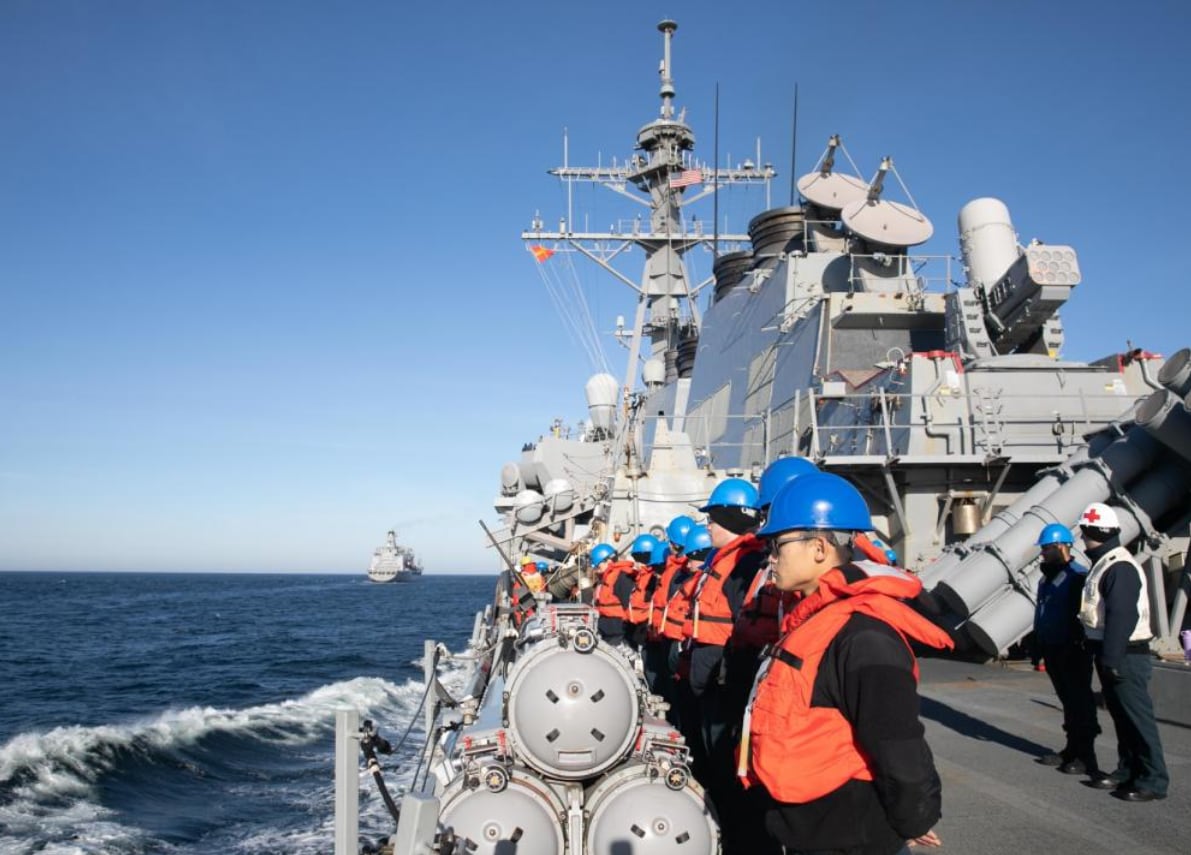The Navy plans to extend the service life of four guided-missile destroyers that were slated to be retired in the coming years, adding four or five years to each of the warships’ standard 35 years of service.
Under a plan announced last week, the destroyers Ramage and Benfold will see their services lives extended to fiscal 2035 and fiscal 2036, respectively, according to the Navy.
The destroyers Mitscher and Milius will each have their service life extended by four years, to FY34 and FY35, respectively.
Mitscher was commissioned 29 years ago, while Ramage entered service 28 years ago. Benfold and Milius joined the fleet 27 years ago.
The move follows a similar service life extension announced in March for Arleigh Burke, the first destroyer in the class.
RELATED

It reflects the sea service’s desire to maintain fleet size and capability in a time of intense competition for defense dollars, while showing Congress that the service can spend judiciously.
While the Navy scrapped a plan in 2020 to extend the service lives of every destroyer in the fleet, the sea service is now analyzing each ship in the class to determine whether extending its life makes sense.
“These extensions align to Secretary of the Navy [Carlos Del Toro’s] commitment to Congress during the FY-24 posture hearings to analyze service life on a hull-by-hull basis and extend the correct ships in order to be good stewards of resources invested in the U.S. Navy by the American people,” said Rear Adm. Fred Pyle, head of the Office of the Chief of Naval Operations’ Surface Warfare Division, in a statement.
Each of the four ships has received Baseline 9 upgrades to its Aegis combat system via the destroyer modernization program, which provides comprehensive midlife upgrades to the ships.
“Based on analysis by the Navy’s technical community, these extensions were feasible because each ship properly adhered to lifecycle maintenance plans and were well maintained in good material condition by their crews,” the Navy said in a release announcing the life extensions.
The Navy has 73 Arleigh Burke-class destroyers in service and is continuing to evaluate the feasibility of extending each ship’s service life.
While extending the service lives of these destroyers partly reflects concerns about maintaining the size of the fleet, it also takes other factors into consideration, according to Bryan Clark, a retired submarine officer and and director of the Hudson Institute think tank’s Center for Defense Concepts and Technology.
For one, upgrades are getting easier, and the Navy already keeps amphibious assault ships, aircraft carriers and ballistic missile submarines in service for 45 years or more, Clark said in an email.
“The original 35-year life of the (Arleigh Burke) class was based on an expectation that they would become obsolete before they got too old to maintain,” he said. “With increasingly digital Aegis, combat system upgrades are getting easier and less expensive.”
Money for new destroyers remains limited, and the readiness of that fleet is uneven as well, Clark said.
The plan to extend the life of all destroyers was first announced in 2018; it would have modernized every ship in the class under a “no destroyer left behind” approach that was later scuttled.
“The Navy took five years to announce these extensions because, in part, the condition of ships was not well understood,” Clark said. “There are many more ships whose service lives have not been extended because their condition is not well understood enough.”
Geoff is the managing editor of Military Times, but he still loves writing stories. He covered Iraq and Afghanistan extensively and was a reporter at the Chicago Tribune. He welcomes any and all kinds of tips at geoffz@militarytimes.com.







